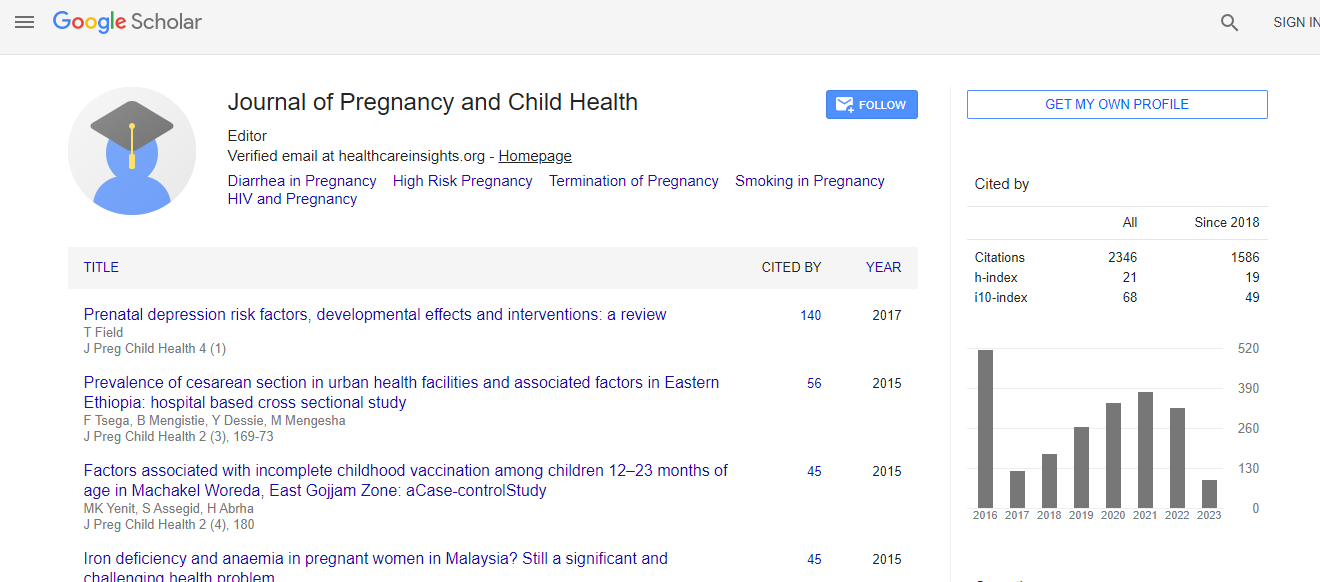Research Article
Perinatal Outcome in Patients with Isolated Oligohydramnios at Term: A Prospective Study
Enas Mushtaq*, Shameema Parveen, Feroze Shaheen, Sami Jan, Asif Abdullah and Yasir Ahmad LoneDepartment of Obstetrics and Gynaecology, SKIMS, Srinagar
- Corresponding Author:
- Enas Mushtaq
Department of Obstetrics and Gynaecology
SKIMS, India
Tel: 9419409779
E-mail: enasmushtaq123@gmail.com
Received date: May 15, 2017; Accepted date: May 31, 2017; Published date: June 04, 2017
Citation: Mushtaq E, Parveen S, Shaheen F, Jan S, Abdullah A, et al. (2017) Perinatal Outcome in Patients with Isolated Oligohydramnios at Term: A Prospective Study. J Preg Child Health 4:332. doi:10.4172/2376-127X.1000332
Copyright: © 2017 Mushtaq E, et al. This is an open-access article distributed under the terms of the Creative Commons Attribution License, which permits unrestricted use, distribution and reproduction in any medium, provided the original author and source are credited.
Abstract
Objective: To evaluate the perinatal outcome in patients with isolated oligohydramnios. Design: A prospective study. Sample: 146 patients had isolated oligohydramnios. These were compared with those having AFI>5 cm (n=500). Methods: A prospective study was conducted from November 2012 to November 2014. Patients were divided into two groups (AFI>50 mm and ≤ 50 mm). The study inclusion criteria were women with singleton pregnancy at 36-42 weeks gestational age (GA) and women sure of the gestational age. Main outcome measures: Abnormal non-stress test, obstetric intervention for fetal distress, Apgar score, meconium stained liquor and NICU admission. Results: The two groups were similar with regard to maternal age, parity and mean gestational age. Isolated oligohydramnios was associated with higher rate of induction of labour (68.49% vs. 21.8%, p<0.001), nonreassuring fetal heart rate (45.20% vs. 13.2%, p<0.001), cesarean section for fetal distress (51.61% vs. 28.47%, p<0.001), meconium stained amniotic fluid (32.2% vs. 21.6%, p=0.008). However, there was no statistically significant difference between the two groups in terms of Apgar score at 1 min, NICU admissions and stillbirths. Conclusion: Isolated oligohydramnios is associated with increased risk of obstetric interventions particularly due to fetal distress. Nonetheless, fetal distress due to oligohydramnios did not lead to increased risk for low Apgar, NICU admissions, stillbirths. This may be reflective of aggressive intrapartum management that these patients received.

 Spanish
Spanish  Chinese
Chinese  Russian
Russian  German
German  French
French  Japanese
Japanese  Portuguese
Portuguese  Hindi
Hindi 
